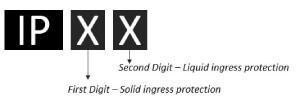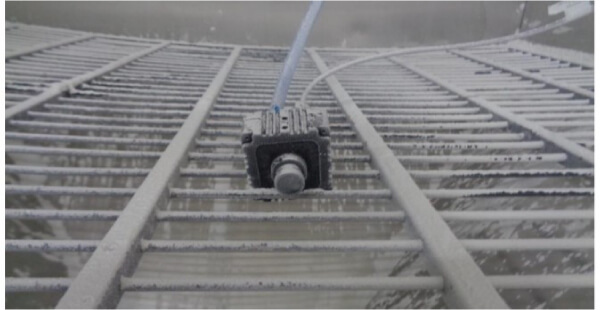| |
Introduction
|
| |
| Vision AI systems powered by Embedded Vision are disrupting many industries and markets such as Automotive, Industrial and Robotics. These Vision AI systems evolve into a new domain of Embedded Vision where the cameras are bundled together with edge AI processing platforms which enable real-time inference on the edge. This has germinated many innovative applications across multiple industries which were hitherto unheard of. This has also unveiled many challenges for Embedded Vision system architects and product designers. For example, while agriculture and farm processing industries use vision and AI based systems for crop monitoring and picking, applications in automotive industries range from driver assistance solutions to highly critical autonomous function systems.
|
| |
|
|
| |
| Click above to know how e-con systems expertise accelerated solutions in diverse industries |
| |
The Challenge
|
| |
| An environmental challenge common to these applications is the system being used in outdoors getting exposed to rain and dust particles. Apart from outdoor environments, Particle management and control are difficult in indoor environments such as factories, warehouses, and mining areas. Designing a reliable system for these applications require enclosed cameras with protection from liquids and dust particles to avoid damage to electronics and increase system lifetime. So, in addition to selecting the right camera that meets the image quality requirements, the selected cameras must also be capable of handling these tough environments. This article explains the basics of environmental protection standards and how the system architects can interpret the various protection ratings. |
| |
A standard reference - The IP system
|
| |
| Designing Embedded Vision systems to cater to outdoor industries require a quantitative understanding of the environmental factors and system components' protection capabilities against the solid and liquid particles in the environment. Ingress Protection (IP) ratings is the international standard defined to quantify the level of protection by an enclosure against solid and water. Published by the International Electrotechnical Commission (IEC), the IP rating system defines test conditions for different levels of sealing effectiveness for outdoor where the products are exposed to harsh weather. The product certified with a specific IP rating is tested to have passed its corresponding test case successfully. The IP rating is a two-digit notation system, with the first numeral (range 0-6) representing the level protection against solid dust particles. The second numeral (range 0-9) denotes the level of protection against liquid ingress. The following table explains how to interpret the IP rating numerals for protection from dust and liquid as well as which IP rating to target when you design a system.
|
| |
 |
| |
First Digit-Protection against solid dust particles
|
| |
| Level |
Effective against |
Description |
| 0 |
- |
No protection against contact and ingress of objects |
| 1 |
>50 mm |
Any large surface of the body, such as the back of a hand, but no protection against deliberate contact with a body part |
| 2 |
>12.5 mm |
Fingers or similar objects |
| 3 |
>2.5 mm |
Tools, thick wires, etc. |
| 4 |
>1 mm |
Most wires, slender screws, large ants etc. |
| 5 |
Dust protected, no harmful deposits |
Ingress of dust is not entirely prevented, but it must not enter in sufficient quantity to interfere with the satisfactory operation of the equipment. |
| 6 |
Dust tight |
No ingress of dust; complete protection against contact (dust tight). A vacuum must be applied. Test duration of up to 8 hours based on air flow. |
|
| |
Second Digit-Protection against liquids
|
| |
| Level |
Protection against |
Effective against |
| 0 |
None |
- |
| 1 |
Dripping water |
Dripping water (vertically falling drops) shall have no harmful effect on the specimen when mounted in an upright position onto a turntable and rotated at 1 RPM. |
| 2 |
Dripping water when tilted at 15° |
Vertically dripping water shall have no harmful effect when the enclosure is tilted at an angle of 15° from its normal position. A total of four positions are tested within two axes. |
| 3 |
Spraying water |
Water falling as a spray at any angle up to 60° from the vertical shall have no harmful effect, utilizing either: a) an oscillating fixture, or b) A spray nozzle with a counterbalanced shield. Test a) is conducted for 5 minutes, then repeated with the specimen rotated horizontally by 90° for the second 5-minute test. Test b) is conducted (with shield in place) for 5 minutes minimum. |
| 4 |
Splashing of water |
Most wires, slender screws, large ants etc. |
| 5 |
Dust protected, no harmful deposits |
Water splashing against the enclosure from any direction shall have no harmful effect, utilizing either: a) an oscillating fixture, or b) A spray nozzle with no shield. Test a) is conducted for 10 minutes. Test b) is conducted (without shield) for 5 minutes minimum. |
| 6 |
Water jets |
Water projected by a nozzle (6.3 mm) against enclosure from any direction shall have no harmful effects. |
| 7 |
Immersion, up to 1 m depth |
Ingress of water in harmful quantity shall not be possible when the enclosure is immersed in water under defined conditions of pressure and time (up to 1 m of submersion). |
| 8 |
Immersion, 1 m or more depth |
The equipment is suitable for continuous immersion in water under conditions which shall be specified by the manufacturer. However, with certain types of equipment, it can mean that water can enter but only in such a manner that it produces no harmful effects. The test depth and duration is expected to be greater than the requirements for IPx7. |
| 9 |
Powerful high temperature water jets |
Protected against close-range high pressure, high temperature spray downs. Smaller specimens rotate slowly on a turntable, from 4 specific angles. Larger specimens are mounted upright, no turntable required, and are tested freehand for at least 3 minutes at distance of 0.15 - 0.2 m. |
|
| |
Trends and Test methods
|
| |
| The IP ratings were primarily deployed in heavy industrial, construction, surveillance, military, transportation and other applications serving outdoor applications. Now, these are made aware to the end consumers by the smartphone industry and by the earphone industry. The smartphone industry used the IP67 rating to assure customers of protection against accidental immersion into water. The earphone or the earbud products project their IPX7 capabilities to assure rain and sweat protection. Reading from the above table, the IP67 or IPX7 means the devices are protected from Immersion of up to 1m depth. Earphones designed to be used while swimming use the IPX8 rating which means the device is protected even with immersion more than 1 m depth which is suitable for products to be used under water but could be an overkill for outdoor applications. |
| |
| A camera system designed to work in simple outdoor areas and harsh outdoor environments such as mines, agriculture fields should have protection against both dust and water particles. While a level 7 of liquid protection ensures protection against rain and water splashes, the system needs a level 6 solid ingress protection to be suitable for harsh environments. Hence IP67 stands as the optimal and common design standard for outdoor solutions. Additional levels of protection such as IP68 or IP69K are also available for applications that require even stringent liquid protection such as underwater camera systems. But for most of the common outdoor applications, IP67 rating is optimal. |
| |
| A camera designed to pass IP67 rating is tested by being exposed to fine particles as talcum powder in a closed chamber for said duration and by immersing in water to depth of up to 1 meter for a time period of 30 mins. The tests are run separately and after the exposure, the device is opened to check for ingression by the dust or water particle. The device is said to have passed the certification if no ingression of particles is observed in both the tests. |
| |
 |
| |
| A camera unit placed in a chamber with exposure to talcum powder for particle ingression test. |
| |
| The tests are conducted at certified test laboratories with pilot or initial batch samples of camera. Details on environment and procedure of the test for compliance with an IP rating is provided in the product test report along with results. System designers need to be wary of the fact that these tests are only a subset of environmental tests and the other regulatory compliance tests (example: EMI/EMC/ESD) are to be conducted separately. The testing does not stop with the samples. The cameras are subjected to similar testing at the manufacturing plants for every batch to ensure consistent quality across all the production batches. |
| |
e-con Systems' IP67 rated outdoor camera solution - the STURDeCAM
|
| |
| e-con Systems enhances its camera solutions expertise with its first IP67 certified new camera product, The STURDeCAM20 for the Embedded Vision and edge AI applications. Providing solutions to various outdoor and indoor applications across different industries and markets, e-con systems recognized the need for a solution that can operate in different environments reliably. The STURDeCAM20 is dust and waterproof allowing operations in harsh outdoor environments such as farms, mining, and industrial areas. The product is designed to cater to outdoor applications as smart agriculture ,surveillance , and assistive solutions in automotive, mining equipment and factory equipment such as robotic arms, mobile robots and forklifts. The STURDeCAM20 uses the GMSL2 (Gigabit Multimedia Serial Link) interface technology that facilitates long range transmission of uncompressed video data to up to 15 meters, allowing practical outdoor solutions. With support to the powerful NVIDIA Jetson platform, the STURDeCAM20 can be evaluated out-of-the box with NVIDIA Jetson AGX Xavier Development kit, with connection of up-to 24 cameras into a single Development board for multi-camera and edge AI applications. |
| |
|
|
| |
 |
| |